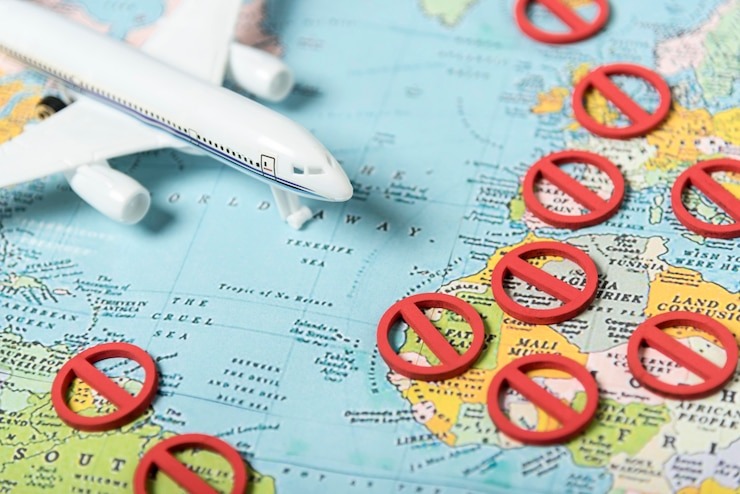
Due to rising crime and civil unrest, the U.S. Department of State issued a Level 3 travel advisory for Colombia in April 2025, advising Americans to reevaluate their travel plans. The warning specifically draws attention to the rising dangers in areas like Arauca, Cauca, and Norte de Santander, where acts of terrorism and violence have become more frequent. Additionally, travelers are advised to stay away from the Colombia-Venezuela border, which is a high-risk area for armed conflict, kidnapping, and the presence of armed groups. For anyone thinking about visiting Colombia in the near future, this warning is a crucial time.
Colombia, which has long been a popular destination due to its vibrant cities, rich culture, and breathtaking scenery, is currently dealing with a more secure environment. Since violent crimes like armed robbery and murder are said to be prevalent in these areas, the U.S. government has stressed the importance of exercising caution. Because terrorist organizations are known to operate in some areas, it is crucial that tourists remain informed and take the appropriate safety measures.
Yellow Fever Outbreak: Travel Risks Increase Due to Public Health Issues
In addition to the safety hazards, Colombia is currently dealing with a yellow fever outbreak that has impacted Tolima, Putumayo, and Nariño, among other areas. Both locals and visitors are now seriously concerned about their health because of this outbreak, which has already taken 23 lives in Tolima alone. Although there is a vaccine to prevent yellow fever, a virus spread by mosquitoes, its recent resurgence has made Colombia a destination that tourists are now aware of.
Given that the outbreak is still spreading to new areas, the U.S. Centers for Disease Control and Prevention (CDC) strongly advises all travelers to get vaccinated before traveling to Colombia. Despite being preventable, yellow fever is spreading quickly in places where it was previously uncommon, which emphasizes how crucial it is to take health precautions when traveling abroad. The decision to visit Colombia at this time is made much more difficult by the increased health risk, which also emphasizes how crucial it is to keep abreast of travel health advisories.
What to Know Before Traveling and Which Areas Are Affected
Travelers should exercise extra caution when thinking about visiting some parts of Colombia due to the ongoing civil unrest and health crisis. With terrorist organizations active in some areas, the departments of Arauca, Cauca, and Norte de Santander continue to be extremely dangerous. Additionally, because of the increased risks of violent conflict, kidnapping, and armed robbery, the Colombia-Venezuela border region should be completely avoided.
The U.S. government is advising all visitors to Colombia to make sure they are adequately vaccinated against yellow fever, as the outbreak is spreading to several departments. Given that the outbreak has caused public health emergencies in the impacted areas and that government organizations are still keeping an eye on and managing the situation, this is especially crucial.
What Do the Different Travel Advisory Levels Mean?
Travel advisories are issued by the U.S. Department of State to assist travelers in determining the degree of risk associated with particular locations. Determining whether it is safe to travel to a specific location can be greatly aided by knowing these advisory levels. There are four levels to the travel advisory system:
| Advisory Level | Description | Risk |
|---|---|---|
| Level 1 | Exercise Normal Precautions | Minimal risk to travelers |
| Level 2 | Exercise Increased Caution | Heightened risk, typically due to terrorism or crime |
| Level 3 | Reconsider Travel | Significant risk, such as ongoing conflict or health issues (e.g., Colombia) |
| Level 4 | Do Not Travel | Extremely high risk, such as life-threatening conditions (e.g., Afghanistan, North Korea) |
Given the escalating crime rates, terrorism, and yellow fever outbreak in Colombia, the Level 3 advisory advises travelers to reevaluate their plans. Any American citizen who intends to travel to the nation in the near future should give this careful thought.
In 2025, is it still safe to travel to Colombia?
Although the yellow fever outbreak and travel advisory are concerning, it’s crucial to keep in mind that Colombia is still a fantastic place to visit. Travelers continue to choose it because of its breathtaking natural beauty, rich cultural history, and hospitable locals. However, potential tourists should be extremely cautious until the security situation improves and the yellow fever outbreak is contained.
It might be prudent to think about alternate locations in the interim that provide comparable cultural experiences and scenic views without the dangers involved. Those who are determined to visit Colombia should keep up with the situation and concentrate on safer destinations like Medellín, Bogotá, and Cartagena.
Important Lessons for Travelers on How to Stay Safe
- Keep Up to Date: Sign up for the Smart Traveler Enrollment Program (STEP) to get updates from the U.S. Embassy in real time.
- Vaccinate: In order to enter some areas of Colombia, one must be vaccinated against yellow fever.
- Avoid High-Risk Areas: Steer clear of the Colombia-Venezuela border, Arauca, Cauca, and Norte de Santander.
- Keep Up with Local News: Stay informed about any changes to the security situation and any local advisories at all times.
Even though Colombia continues to provide incredible travel experiences, the present health and safety hazards must be carefully taken into account. In order to make better decisions and guarantee a safe trip, travelers should stay informed, plan ahead, and heed advisories.
Thank you for reading!
Regards: Eugo
